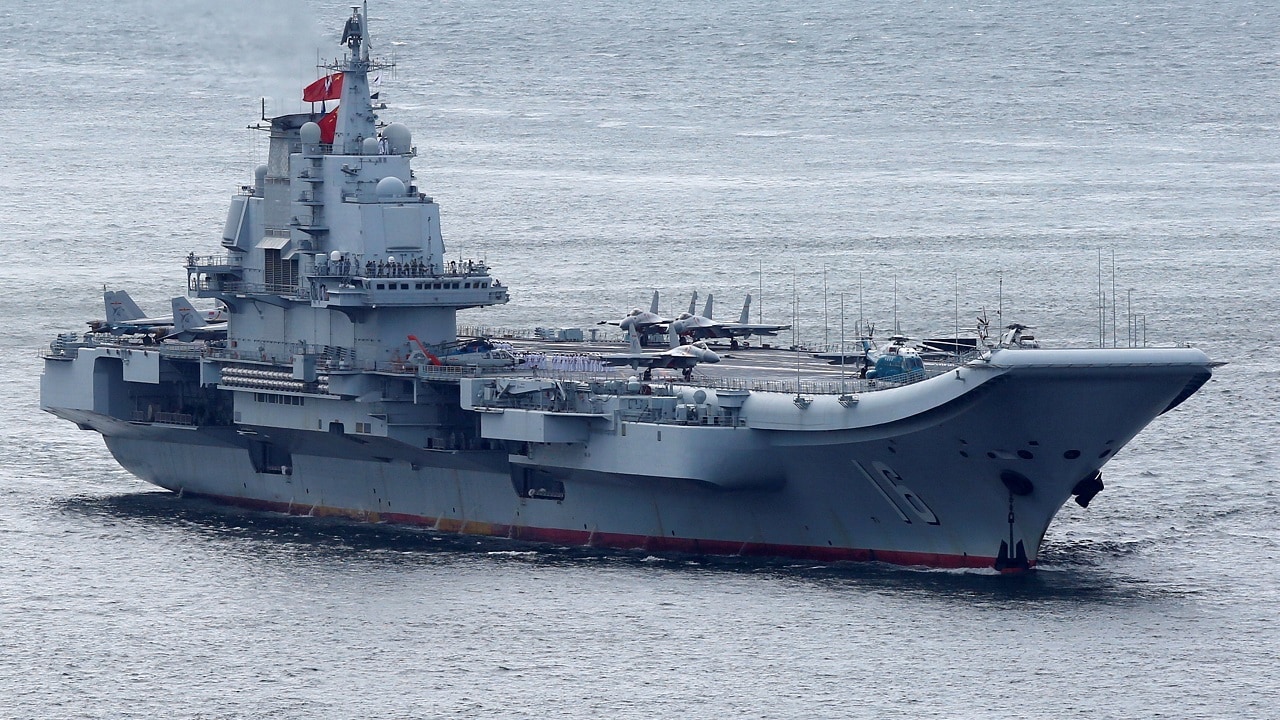Last month, China launched its third aircraft carrier – the Type 003 Fujian – to much hype and celebration, yet it will still be years before the ship enters service with the People’s Liberation Army Navy (PLAN). The new carrier, which is China’s most advanced vessel, was officially launched in Shanghai on June 17. (check out our extensive coverage of China’s new aircraft carrier here)
According to reports, the first carrier to be truly domestically-designed has no weapons or radar systems installed. Moreover, while the carrier is part of Beijing’s efforts to create a blue water navy capable of operating worldwide and far from Chinese waters, most experts have said the goal remains out of reach.
Wang Hongliang, an associate researcher at the Shanghai Jiao Tong University’s National Strategic Research Centre, told the South China Morning Post it would take the warship three to four years to enter active service.
A Great Leap Forward?
Beijing has touted the carrier’s capabilities, which is the first Chinese flattop to feature a full-length flight deck with an electromagnetic-type catapult launch system. That will allow it to carry far heavier aircraft with more extensive weapons loads.
Displacing around 88,000 tons, Fujian is also significantly larger than the PLAN’s Type 001 Liaoning, the former Soviet Kuznetzov-class aircraft cruiser, which had been purchased from Ukraine and refurbished; and even the Type 002 Shandong, which is essentially a Chinese domestically-built copy of the Type 001 with a few modifications.
While the largest warship ever built by China, the Fujian is still significantly smaller than the United States Navy’s Nimitz-class carriers, which displace 100,000 tons. More importantly, the Chinese warship is conventionally powered, whereas the U.S. Navy’s carrier force consists of 11 nuclear-powered carriers, including 10 Nimitz-class and the new USS Gerald R. Ford (CVN-78), the lead vessel of a new class of American aircraft carriers.
Yet, with three carriers, the PLAN has surpassed the UK’s Royal Navy, which currently operates two conventionally-powered carriers. That certainly could be a great leap forward in terms of prestige for Beijing.
Modern Naval Force
Since taking power in 2012, Chinese President Xi Jinping made overhauling his nation’s military a central part of his agenda, including building a thoroughly modern “world-class” navy. The efforts have largely been successful, as China now has the largest navy numerically with 355 ships, including submarines, and the U.S. even estimates that the force will grow to 420 ships by 2025 and 460 ships by 2030.
“This is an important milestone for China’s military-industrial complex,” Ridzwan Rahmat, a Singapore-based analyst at defense intelligence company Janes, told the Daily Mail.
“This shows that Chinese engineers are now able to indigenously manufacture the full suite of surface combatants associated with modern naval warfare, including corvettes, frigates, destroyers, amphibious assault ships, and now an aircraft carrier,” added Rahmat. “This ability to construct a very complex warship from the ground up will inevitably result in various spin-offs and benefits for the Chinese shipbuilding industry.”

- Fujian, China’s New Aircraft Carrier. Image Credit: Chinese Internet.
However, the PLAN still lacks many of the U.S. Navy’s capabilities, notably in aircraft carriers. China is clearly on the way, but it will take years to catch up. Finally, given the increasing capabilities of anti-ship weapons, the question is whether this investment in what could be large floating targets will actually allow Beijing to take its place in the world, or if it will just be a costly misstep.
A Senior Editor for 1945, Peter Suciu is a Michigan-based writer who has contributed to more than four dozen magazines, newspapers and websites. He regularly writes about military hardware, firearms history, cybersecurity and international affairs. Peter is also a Contributing Writer for Forbes.

